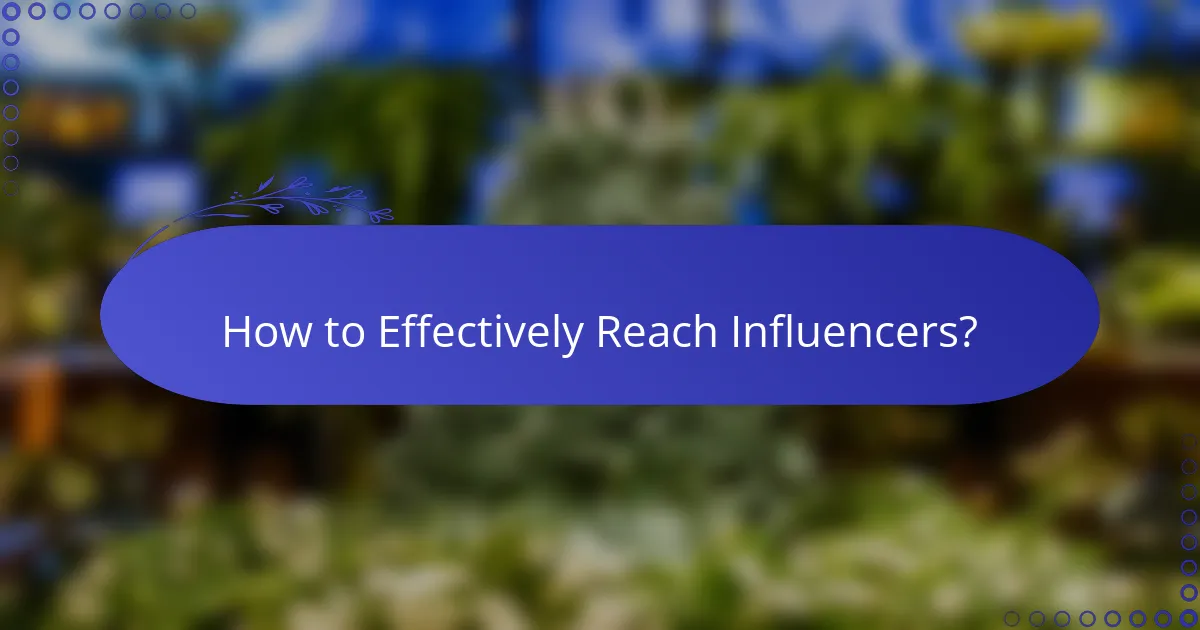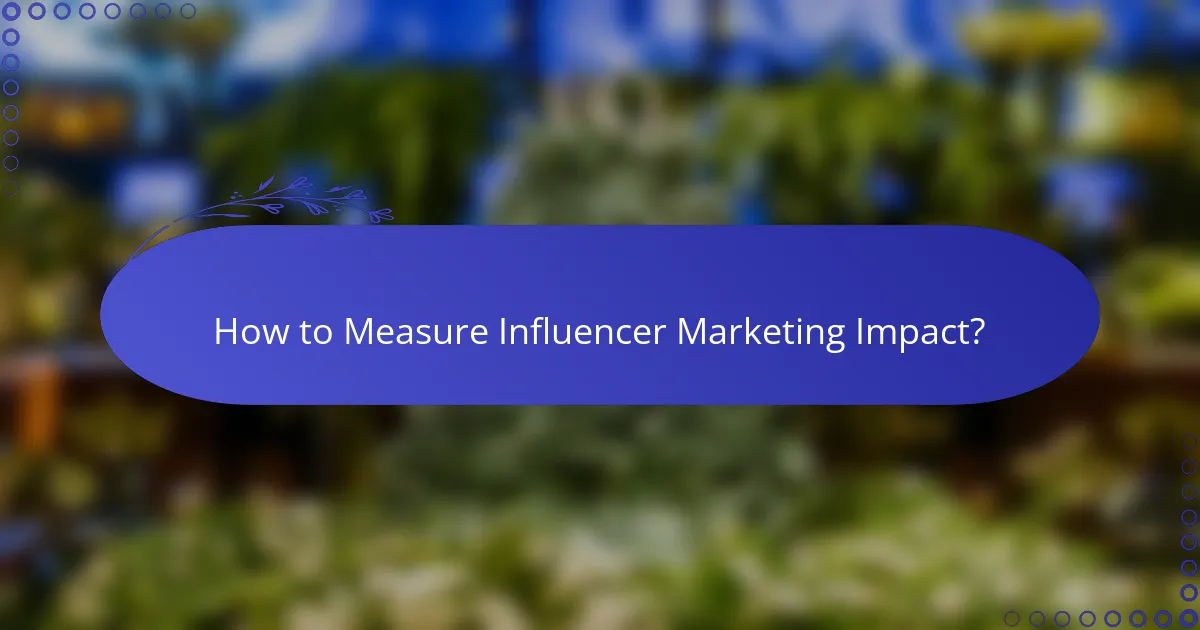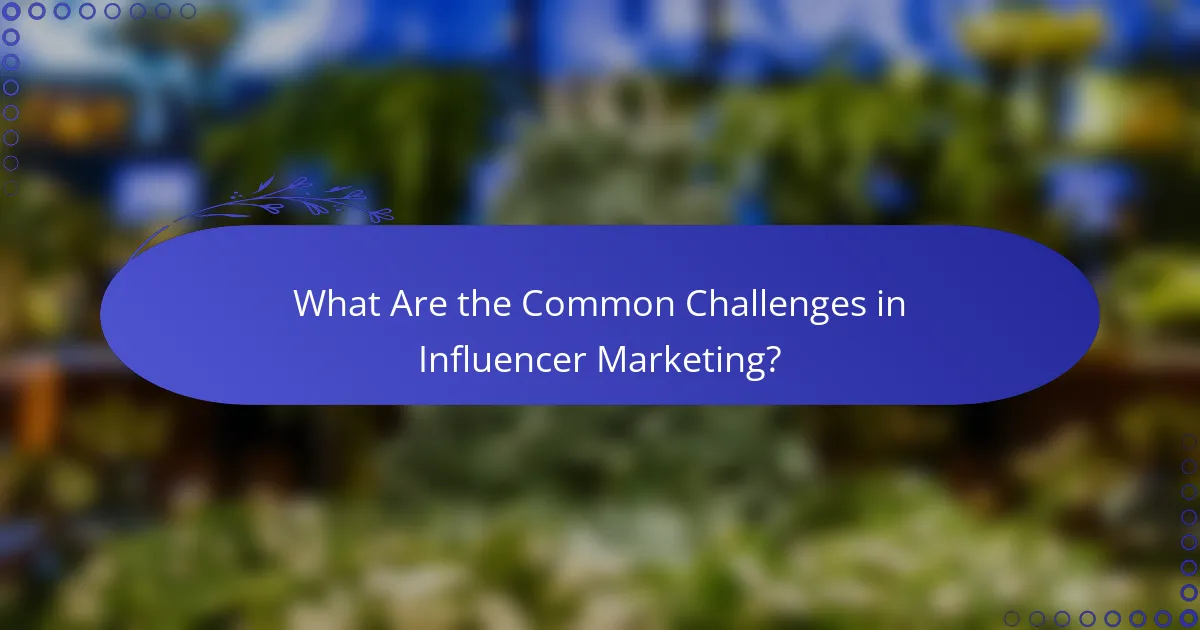Influencer marketing has emerged as a powerful strategy for brands seeking to enhance their visibility and engagement. By identifying influencers whose audiences align with your brand and fostering genuine relationships, you can create impactful collaborations that resonate with consumers. Effective outreach and collaboration strategies, such as co-creating content and hosting joint events, are essential for maximizing the benefits of these partnerships.

How to Effectively Reach Influencers?
To effectively reach influencers, focus on identifying those whose audience aligns with your brand and then engage them through personalized outreach. Building genuine relationships can significantly enhance collaboration opportunities and impact.
Identify relevant influencers
Start by defining your target audience and the niche you want to address. Use social media platforms and industry blogs to find influencers who resonate with your brand values and have an engaged following. Tools like Instagram, Twitter, and LinkedIn can help you discover individuals who regularly discuss topics relevant to your products or services.
Consider factors such as follower count, engagement rates, and content quality when selecting influencers. Aim for a mix of micro-influencers (with thousands to tens of thousands of followers) and macro-influencers (with hundreds of thousands to millions of followers) to maximize reach and authenticity.
Utilize outreach tools like BuzzSumo
BuzzSumo is a powerful tool for discovering influencers based on specific topics or keywords. By entering relevant terms, you can identify top content creators and their social media profiles. This allows you to analyze their engagement metrics and determine who might be the best fit for your outreach efforts.
Other tools like Traackr and Followerwonk can also provide insights into influencer performance and audience demographics. Using these tools can streamline your research process and help you make informed decisions.
Craft personalized messages
When reaching out to influencers, personalization is key. Start your message with a genuine compliment about their work or recent content that resonated with you. This shows that you are familiar with their brand and not sending a generic message.
Clearly articulate why you want to collaborate and how it can benefit both parties. Avoid lengthy emails; instead, keep your message concise and focused on mutual interests to increase the likelihood of a positive response.
Leverage social media platforms
Social media is an effective channel for reaching influencers. Engage with their content by liking, sharing, and commenting thoughtfully to build rapport before initiating direct outreach. This can help you stand out when you eventually reach out.
Platforms like Instagram and Twitter allow for direct messaging, which can be an effective way to initiate contact. Ensure your profile is professional and reflects your brand to make a strong first impression.
Engage through mutual connections
Utilizing mutual connections can significantly enhance your outreach efforts. If you have any shared contacts, consider asking for an introduction. A warm introduction can increase your credibility and improve the chances of a successful collaboration.
Networking at industry events or online webinars can also help you meet influencers and establish relationships organically. Building a community around your brand can lead to more authentic partnerships and collaborations.

What Are the Best Collaboration Strategies?
The best collaboration strategies in influencer marketing focus on creating mutually beneficial partnerships that enhance brand visibility and engagement. Effective methods include co-creating content, offering exclusive promotions, hosting joint events, and utilizing affiliate marketing programs.
Co-create content with influencers
Co-creating content with influencers involves collaborating on projects that showcase both the influencer’s style and the brand’s message. This strategy can include videos, blog posts, or social media campaigns that resonate with the influencer’s audience while promoting the brand.
Consider setting clear objectives and guidelines to ensure the content aligns with both parties’ values. For example, a beauty brand might partner with a makeup artist to create tutorial videos that highlight specific products, benefiting from the artist’s expertise and audience trust.
Offer exclusive promotions
Offering exclusive promotions through influencers can drive engagement and sales by providing their followers with unique discounts or offers. This tactic not only incentivizes purchases but also makes the audience feel valued and special.
For instance, a clothing brand might collaborate with an influencer to share a limited-time discount code, encouraging followers to act quickly. Ensure the promotion is easy to understand and redeem, as complicated offers can deter potential customers.
Host joint events or webinars
Hosting joint events or webinars with influencers can create a dynamic platform for interaction and knowledge sharing. These events allow brands to tap into the influencer’s audience while providing valuable content that enhances brand credibility.
Consider topics that align with both the influencer’s expertise and your brand’s mission. For example, a fitness brand could partner with a health influencer to host a live workout session, engaging both audiences and fostering community around shared interests.
Utilize affiliate marketing programs
Utilizing affiliate marketing programs allows influencers to earn commissions on sales generated through their promotional efforts. This strategy aligns the interests of both the brand and the influencer, as both benefit from increased sales.
Implement a straightforward affiliate system where influencers can track their performance and earnings. For example, a tech company might provide influencers with unique links to share, making it easy to measure the impact of their promotions and adjust strategies accordingly.

How to Measure Influencer Marketing Impact?
Measuring the impact of influencer marketing is crucial for understanding its effectiveness and return on investment. Key metrics include engagement rates, conversion rates, and brand sentiment, which provide insights into how well your campaigns are performing.
Track engagement metrics
Engagement metrics, such as likes, shares, comments, and views, are essential for assessing how audiences interact with influencer content. High engagement rates often indicate that the content resonates well with the target audience. Aim for a minimum engagement rate of around 1-3% for effective campaigns.
To track these metrics, use social media analytics tools provided by platforms like Instagram, Facebook, or TikTok. Regularly monitoring these figures can help you adjust your strategy and improve future collaborations.
Analyze conversion rates
Conversion rates measure how many users take a desired action after engaging with influencer content, such as making a purchase or signing up for a newsletter. A good conversion rate typically ranges from 1-5%, depending on the industry and campaign goals.
To analyze conversion rates, set up unique tracking links or promo codes for each influencer. This allows you to attribute sales or leads directly to their efforts, providing clear insights into the effectiveness of your influencer partnerships.
Use tools like Google Analytics
Google Analytics is a powerful tool for measuring the impact of influencer marketing on website traffic and user behavior. By tracking referral traffic from influencer campaigns, you can gain insights into how well they drive visitors to your site.
Set up goals in Google Analytics to monitor specific actions, such as purchases or sign-ups, that result from influencer referrals. This data can help you evaluate the overall effectiveness of your influencer marketing strategy.
Evaluate brand sentiment
Brand sentiment analysis involves assessing how audiences feel about your brand after engaging with influencer content. Positive sentiment can lead to increased loyalty and advocacy, while negative sentiment can harm your brand’s reputation.
Use social listening tools to monitor mentions of your brand across social media and review platforms. Analyzing comments and feedback can provide valuable insights into public perception and help you adjust your messaging accordingly.

What Are the Key Criteria for Selecting Influencers?
Selecting the right influencers is crucial for effective marketing campaigns. Key criteria include audience alignment, engagement rates, and the influencer’s authenticity and credibility.
Assess audience alignment
Audience alignment refers to how well an influencer’s followers match your target demographic. This includes factors such as age, gender, location, and interests. An influencer with a follower base that closely resembles your ideal customer profile is more likely to drive meaningful engagement.
To assess alignment, analyze the influencer’s audience insights, which can often be found in their media kits or through analytics tools. Look for influencers whose audience demographics reflect your brand’s target market, ensuring that your message reaches the right people.
Evaluate engagement rates
Engagement rates measure how actively an influencer’s audience interacts with their content. This includes likes, comments, shares, and overall interaction relative to their follower count. High engagement rates often indicate a loyal and interested audience, which can lead to better campaign outcomes.
As a general rule, aim for influencers with engagement rates above 2-3%. However, this can vary by platform; for instance, Instagram may have different benchmarks compared to TikTok. Use tools to track these metrics and compare potential influencers to find the best fit for your campaign.
Consider authenticity and credibility
Authenticity and credibility are essential for building trust with the audience. Influencers who genuinely connect with their followers and maintain transparency about partnerships tend to have a more significant impact. Look for influencers who share personal stories and experiences related to your brand.
Check for past collaborations and how they were received by the audience. Influencers who have a history of successful partnerships and positive feedback are often more credible. Avoid influencers who appear overly promotional or lack genuine engagement with their followers, as this can undermine your campaign’s effectiveness.

What Are the Common Challenges in Influencer Marketing?
Influencer marketing presents several challenges that brands must navigate to achieve successful campaigns. Key issues include managing relationships with influencers, ensuring brand alignment, and effectively measuring return on investment (ROI).
Managing influencer relationships
Building and maintaining strong relationships with influencers is crucial for successful collaborations. Brands should prioritize clear communication, setting expectations, and providing timely feedback to foster trust and loyalty.
Regular check-ins can help keep influencers engaged and informed about campaign progress. Additionally, offering incentives such as exclusive products or performance bonuses can strengthen these partnerships.
Ensuring brand alignment
Brand alignment is essential to ensure that the influencer’s values and audience resonate with the brand’s identity. Brands should conduct thorough research to select influencers whose content and image match their target demographic.
Creating a detailed brief that outlines brand guidelines, messaging, and campaign goals can help influencers produce content that aligns with the brand’s vision. Regular reviews of influencer content before publication can also help maintain consistency.
Measuring ROI effectively
Measuring the return on investment in influencer marketing can be complex, as it involves various metrics such as engagement, reach, and conversions. Brands should establish clear KPIs before launching a campaign to track performance effectively.
Using tools like UTM parameters for tracking traffic and sales can provide insights into the campaign’s effectiveness. Additionally, analyzing social media metrics and audience feedback can help gauge overall impact and inform future strategies.
